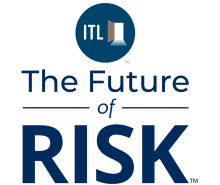In 2025, artificial intelligence (AI) is not just reshaping consumer interactions—it's fundamentally reinventing how insurers assess, predict, and manage risks. With AI risk detection tools becoming smarter and faster, the once-static process of underwriting and risk profiling has evolved into a real-time, dynamic system.
In this article, we'll explore how AI detection is changing risk assessments, the technologies driving the change, and what it means for insurers, policyholders, and the entire financial ecosystem.
From Traditional Methods to AI-Driven Solutions
For decades, risk assessments in insurance relied heavily on historical data, manual reviews, and human judgment. While effective to an extent, this approach was time-consuming, prone to error, and often generalized, ignoring individual nuances. This model is rapidly becoming obsolete.
In its place, AI-driven risk detection offers a data-driven, real-time, and hyper-personalized alternative that promises better accuracy, lower costs, and enhanced customer trust. AI detection leverages a combination of machine learning algorithms, natural language processing (NLP), and big data analytics to assess risk more accurately than ever before. Here's how it functions in modern insurance:
- Data Ingestion: AI systems pull structured and unstructured data from various sources such as sensors, social media, medical reports, and transaction records.
- Pattern Recognition: Algorithms analyze this data to identify hidden patterns, anomalies, and correlations.
- Risk Scoring: AI tools generate real-time risk scores, offering detailed insights that can trigger automated policy decisions or human review.
- Continuous Learning: AI systems learn over time, continuously refining their accuracy and recommendations.
Key Technologies Transforming Risk Assessment
Predictive analytics engines use historical claims and behavioral data to forecast future risks and loss probabilities with uncanny precision. Computer vision in claims and underwriting allows AI models to analyze photos and videos to assess property or vehicle conditions instantly, improving claim verification and reducing fraud.
Natural language processing (NLP) tools can parse through massive volumes of textual data, including claims descriptions, call transcripts, and social media posts, to detect fraud indicators or emotional sentiment. Meanwhile, telematics and IoT integration enables AI to interpret data from smart devices like fitness trackers, vehicle sensors, or home monitors to assess real-time behavior, health, or environmental risks.
Consider Lemonade Insurance, an AI-driven insurtech firm that processes claims through its AI bot, Jim. In 2025, it's reported that over 40% of Lemonade's claims are resolved within seconds. The system uses behavioral analysis and NLP to detect potential fraud and approve low-risk claims immediately—showcasing the power of AI in real-world scenarios.
Insurance Segments Embracing AI Risk Detection
- Health Insurance: Wearables and biometric data help AI models predict potential health issues, enabling personalized premiums and preventive care models.
- Auto Insurance: AI detects risky driving behavior through telematics data and adjusts premiums or coverage accordingly.
- Home Insurance: Smart home systems integrated with AI can identify potential fire, flood, or intrusion risks, allowing real-time risk scoring and alerts.
- Commercial Insurance: AI assesses operational data from factories, supply chains, and employee behavior to detect safety risks or cyber vulnerabilities.
Benefits and Challenges of AI Risk Detection
The advantages are compelling. AI minimizes human bias and error, leading to more precise risk profiling and increased accuracy. Automated systems can analyze thousands of data points in seconds, enabling instant policy decisions and faster underwriting. Risk scores update in real time, allowing insurers to adjust pricing based on current behavior, not outdated statistics, through dynamic premiums. AI also detects inconsistencies, anomalies, or repetitive claim patterns that may suggest fraud, often before payouts are made. Policyholders appreciate personalized pricing and faster service, which leads to higher satisfaction and retention and improved customer trust.
However, significant challenges remain. With AI pulling data from personal sources, insurers must navigate tight regulations and ethical boundaries around data privacy and security. If not properly trained, AI models may replicate societal biases, unfairly affecting certain groups through algorithmic bias. Customers and regulators want clear explanations of AI decisions, and "black box" algorithms pose a risk to accountability regarding transparency and explainability. Many insurers still rely on outdated software, making seamless AI integration with legacy systems difficult.
What the Future Holds
As more insurers embrace AI detection tools, expect a dramatic shift in the industry toward fully autonomous underwriting, blockchain-backed AI data sharing, and global regulatory frameworks for AI governance. In essence, the convergence of AI and insurance will drive a new era of proactive risk management rather than reactive claims processing.
AI risk detection is not just a tech trend—it's a business imperative. Insurers that leverage these tools will gain unmatched agility, accuracy, and trust from customers. As algorithms grow smarter and more intuitive, the line between technology and traditional underwriting will blur, setting new benchmarks in how insurance operates.
AI isn't replacing humans—it's enhancing human judgment with machine precision, redefining what it means to assess risk in a modern world.








